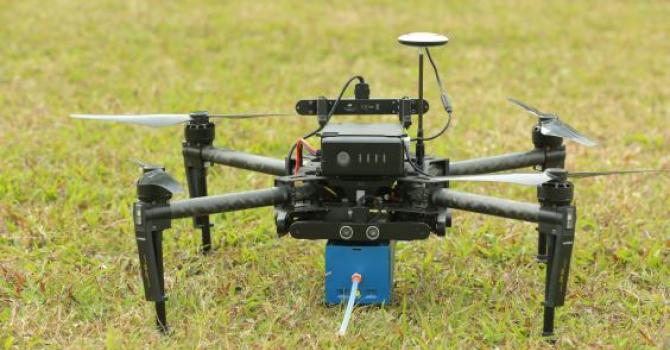Journal of HKIE: Calls for data transparency and more multi-department collaboration for quality of life improvements
Prof. Alexis Lau made a comment on The Journal of the Hong Kong Institute of Engineer on the application of a special air purification system in the tunnels of the Central-Wan Chai Bypass and Island Eastern Corridor Link project.
Tackling air pollution to protect the public's health is a challenge particularly in high-density, high-population and high-rise cities. In Hong Kong, the Environmental Protection Department (EPD) rolled out a Clean Air Plan in 2013 followed by a series of targeted pollution control measures which resulted in significant reductions in all locally produced pollutants. Nevertheless, despite the substantial reduction (31%) over the past few years, nitrogen dioxides (NO2) still exceeded Hong Kong's Air Quality Objective both for its one-hour and annual average.
Vehicle emission is one of the major air pollution sources for both NO2 and particulate matter (PM) posing short-term and long-term threats to public health in Hong Kong. In order to reduce traffic emissions, the government has allocated substantial resources and targeted control measures to reduce traffic emissions. These include large-scale subsidy programmes in retiring pre-Euro 4 diesel commercial vehicles, replacing catalytic converters for LPG-powered taxis and public light buses, and retrofitting franchised buses' selective catalytic reduction devices.
While this multipronged approach and massive commitment have resulted in emission reductions at the roadside, there are still many air pollution hot spots in our densely populated urban areas. These can be in areas near street canyons, for example, or close to the exhaust of enclosed road tunnels, where exposure to air pollution is significant. On the other hand, because of their high concentrations of pollutants, road tunnels actually allow for more effective control of air emissions into the atmosphere through filtration.
The air purification system (APS) of the Central - Wan Chai Bypass and Island Eastern Corridor Link (CWB)project is a welcomed addition to the government's set of tools to tackle the pollution-exposure problem in the city.
Compared to the past, the use of the APS by the Highways Department (HyD) in the CWB tunnel is a proactive approach to take advantage of the opportunity offered by the enclosed tunnel environment to actively remove hazardous pollutants and to lower their emission into the atmosphere. The CWB APS is designed with massive air purification infrastructures running all year round at a total airflow rate of about 1,500 cum/s, many times more than the flow rate used in, say, the M30 tunnel in Madrid. The system is designed to reduce the emission of PM and NO2 from the tunnel by at least 80%, corresponding to a large reduction in the adverse air quality impact for Hong Kong as a whole. This is particularly significant for neighbouring communities close to the tunnel exhaust areas.
From an environmental point of view, it is encouraging to see the government's decision to introduce bold new measures and technologies to try to reduce the majority of harmful air-borne emissions into the atmosphere as part of the design of new large-scale infrastructure projects. While the application of APS in CWB is the first of its kind in Hong Kong, and its scale is the largest to date in the world, the experience gained will be instructive for other high-density cities around the world.
We urge the government to release operational data regarding the reduction of air pollution and energy consumptions from time to time for progressive reviews so that similar or even better systems can be designed for new tunnel systems in Hong Kong or other high-density cities around the world.
With the world's urbanisation targeted to grow from 54% in 2015 to 68% in 2050, deploying such emission reduction systems in new urban infrastructures could lead to significant improvements in the protection of public health.
Environmental protection cannot be accomplished by just a single authority. It needs a concerted effort by all stakeholders from planning to implementation. The CWB and Island Eastern Corridor Link project shows that cross-department collaboration between the HyD, EPD, Electrical and Mechanical Services Department and Transport Department is taking aggressive measures that can produce world-leading examples of environmental improvements in Hong Kong. We look forward to more multi-departmental synergies in the government while building its smart city infrastructures so that Hong Kong can be crowned not only the world's most competitive economy but also a leading city in environmental, health, and quality of life improvements.




